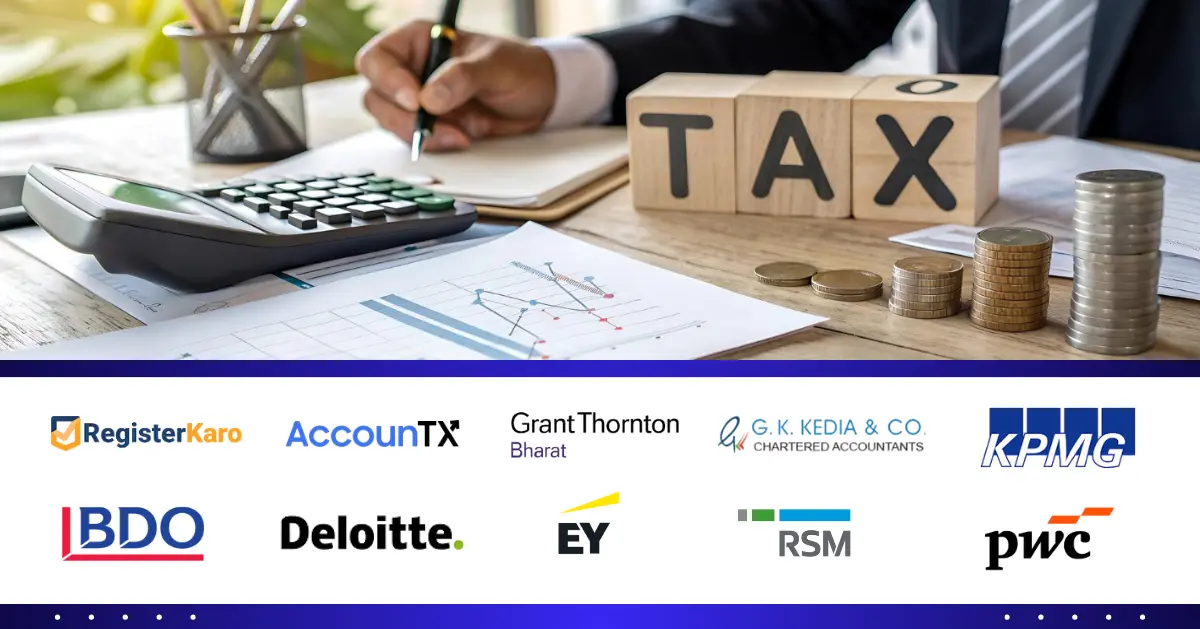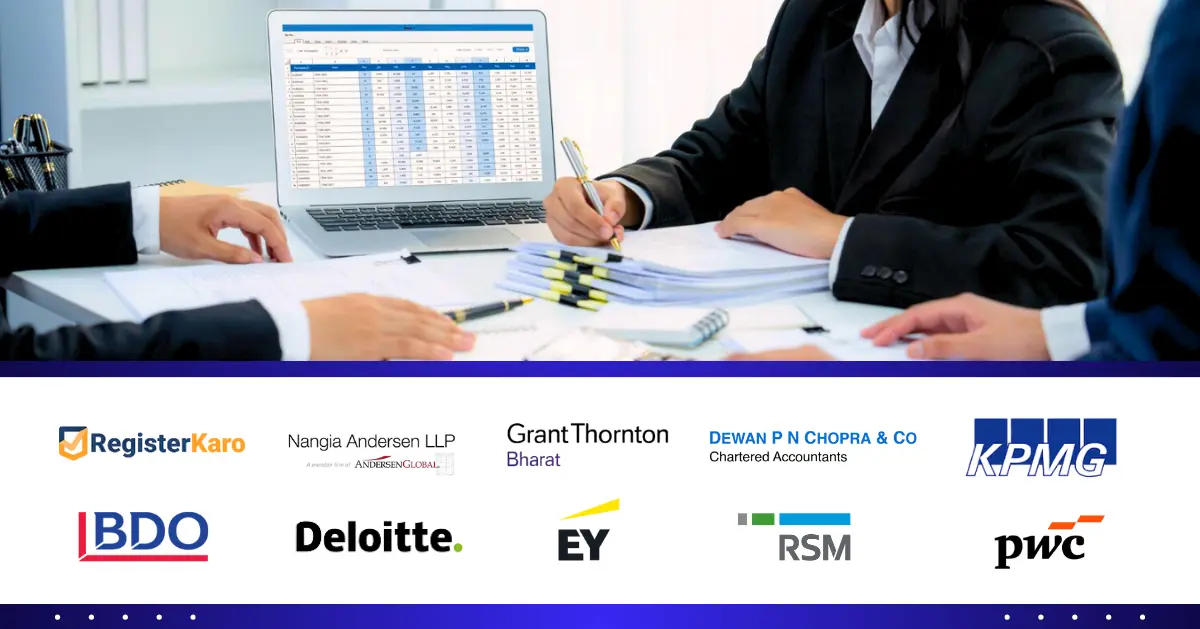
What is Form 27EQ?
Companies submit quarterly TCS (Tax Collected at Source) returns by filing Form 27EQ under Income Tax regulations. Additionally, tax professionals define this Form as an extensive TCS statement covering quarterly transactions.
Key Features:
- Digital Processing: The Income Tax portal handles complete online submission workflows.
- Quarterly Coverage: Companies report three months of TCS collection data per filing.
- Complete Documentation: Businesses provide transaction details, amounts, and party information.
- Error Prevention: The system runs validation checks and highlights correction requirements.
The Income Tax Department mandates this return to monitor tax collection activities. This ensures transparency by requiring detailed TCS reporting. Therefore, businesses must prioritize their Form 27EQ filing obligations consistently.
Who Must File Form 27EQ?
Tax authorities require submission of this form even for minimal TCS collections. Here’s the list for those who need to file:
Mandatory filers include:
- Service providers with TCS obligations under current regulations.
- E-commerce platforms facilitating transactions requiring tax collection.
- Trading companies dealing in specified goods categories.
Authorities set specific requirements for small-scale collectors, and some transactions require separate filing procedures. Businesses should consult tax professionals to understand their compliance duties.
Form 27EQ Due Date Guidelines
Form 27EQ must be filed quarterly, with submissions due by the 15th of the month following each quarter:
| Quarter | Period Covered | Filing Due Date |
| Q1 | April – June | July 15 |
| Q2 | July – September | October 15 |
| Q3 | October – December | January 15 |
| Q4 | January – March | May 15 |
Sometimes, the Income Tax Department extends the Form EQ27 due date periods temporarily.
The Income Tax Department extends Form 27EQ deadlines when:
- The tax portal has technical issues.
- Major system upgrades occur.
- Natural disasters affect taxpayers.
- New TCS rules are introduced.
- Due dates fall on holidays or weekends.
- Industry bodies or taxpayers request relief.
Step-by-Step Filing Process of Form 27EQ for TCS Return
Here’s the proper documentation to support the entire filing workflow effectively:
1. Preparation
- Companies collect all TCS-related documents for the reporting quarter
- They gather all relevant financial documents.
- Teams verify that the collected amounts match internal records accurately.
- They organize supporting documents systematically for easy access.
2. Online Registration and Access
- Users log in to the Income Tax Department’s TCS portal.
- Businesses verify registration credentials and access permissions.
- They ensure digital signature certificates are valid and functional.
- Teams check system compatibility and browser requirements in advance.
3. Data Entry and Validation
- Teams enter all transaction details into the respective sections.
- They verify amounts, dates, and party details with precision.
- Companies use built-in validation tools to detect any errors.
- They save their progress frequently to avoid data loss.
4. Final Review and Submission
- Teams review all entered information before submitting the form.
- Businesses generate and save acknowledgement receipts for records.
- They retain copies of the filed Form 27EQ for future audits.
- Companies confirm submission through the portal’s verification message.
Structure and Components of Form 27 EQ
Form 27 EQ is organized into five distinct sections, each serving a specific purpose in the tax collection reporting process.
Section 1: Information of Deductor
This initial section requires the deductor to provide essential identification and filing details:
- Tax Account Number (TAN) information
- Permanent Account Number (PAN) details
- Relevant financial year period
- Corresponding assessment year
- Declaration regarding any previous filing for the current quarter
- Original statement’s provisional receipt number (if previously submitted)
Section 2: Collector Details
The second section captures comprehensive information about the tax collector:
- Full name of the collecting authority
- Branch or divisional affiliation (where applicable)
- Complete personal contact information, including residential address, telephone number, and email address (Refer to the image below)
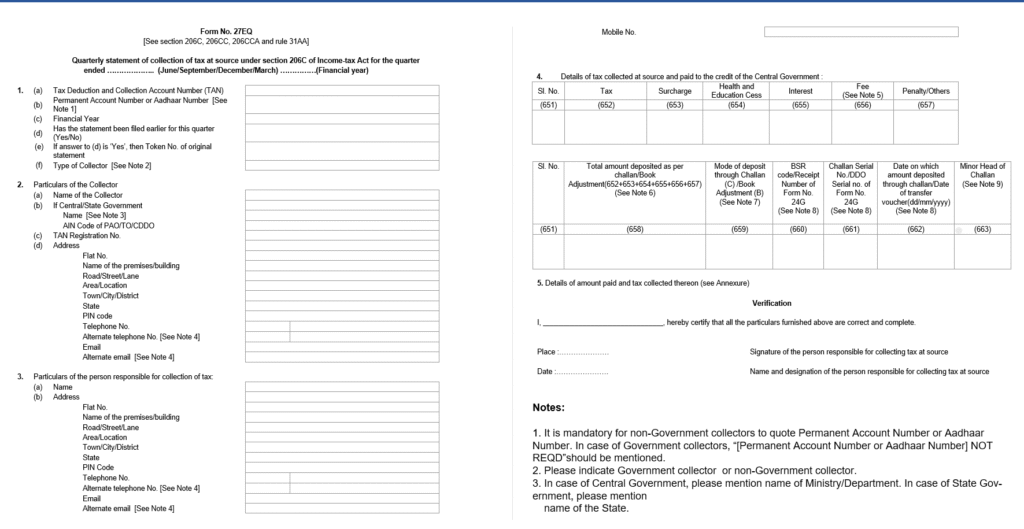
Section 3: Authorized Personnel Information
This section focuses on the individual responsible for tax collection operations:
- Complete name of the authorized person
- Full residential or business address details
Section 4: Tax Collection and Payment Summary
The fourth section provides a detailed breakdown of all tax-related transactions:
- Applicable collection code classification
- Total Tax Collected at Source (TCS) amount
- Additional surcharge components
- Education Cess calculations
- Interest charges (if any)
- Miscellaneous additional amounts
- Aggregate deposit amount (total of all above components)
- Payment instrument details (cheque or demand draft number)
- Bank Scroll Receipt (BSR) code
- Official deposit date
- Transfer voucher number or challan reference
- Book entry deposit confirmation (if applicable)
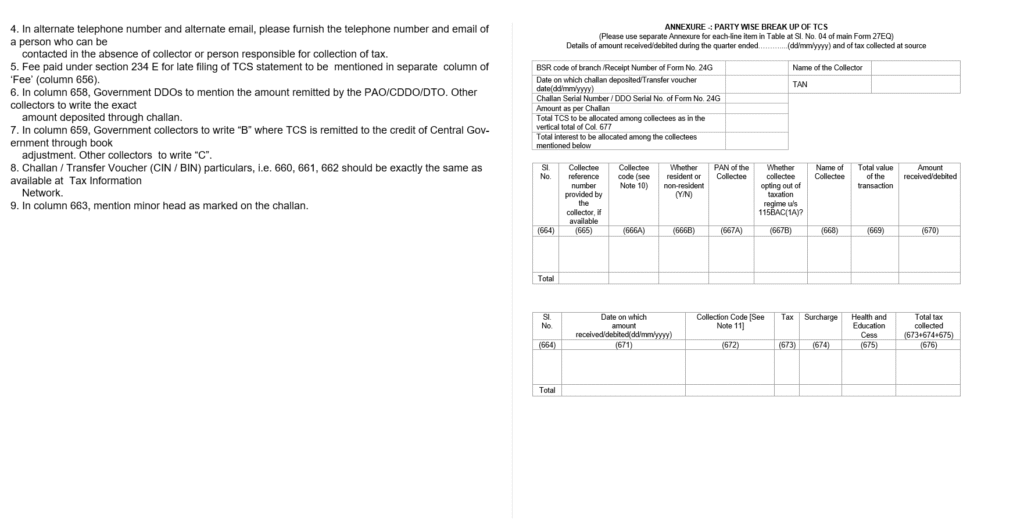
Section 5: Final Declaration and Documentation
The concluding section requires comprehensive reporting of collected taxes and payment confirmations:
- Complete tax collection summary
- Payment amount verification details
- Required signatures from responsible parties
- All supporting information must be documented in the accompanying annexure.
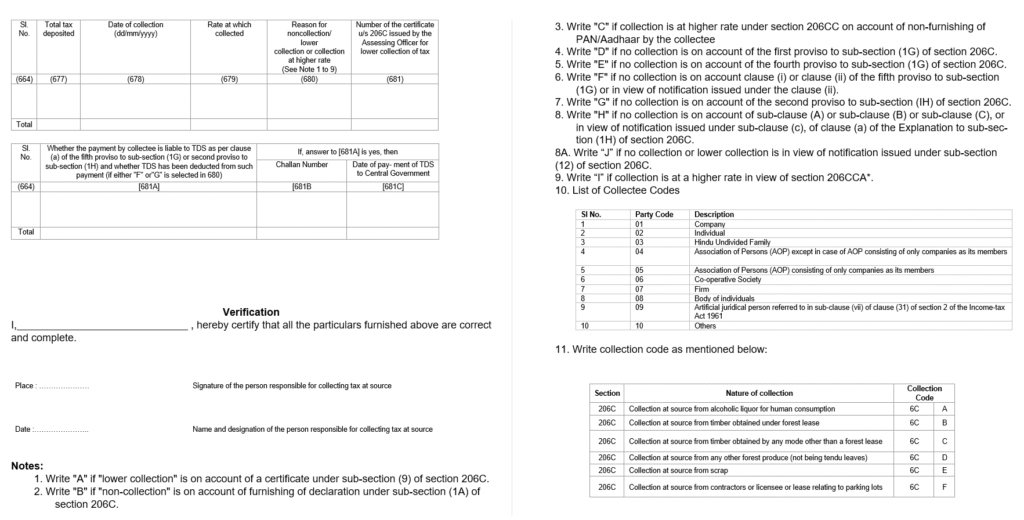
This structured approach ensures systematic reporting and compliance with tax collection requirements while maintaining clear accountability at each stage of the process.
What Happens When You File Form 27EQ Late or Wrong?
The Income Tax Department charges heavy fines when businesses file Form 27EQ late or give wrong information. These fines apply no matter how much TCS you owe, making it important to file on time and correctly to avoid extra costs.
Late Filing Charges
The department charges ₹200 for every day your filing is delayed past the due date. This daily penalty continues until you submit your return, up to the total amount of your TCS collected for that quarter.
Example: Your quarterly TCS totals ₹8,000, and you file 25 days late. The department calculates your penalty as ₹5,000 (25 days × ₹200), which stays within the allowed limit.
Extra Penalties
Besides late filing charges, the tax office can charge penalties from ₹10,000 to ₹1,00,000 when you:
- Completely avoid filing Form 27EQ
- Submit incorrect taxpayer identification numbers
- Report wrong TCS amounts or provide incomplete information
- Furnish misleading beneficiary details
The department can charge this penalty even after you pay late filing charge
Common Challenges and Solutions for Form EQ27
Taxpayers encounter recurring issues while completing return submissions, such as:
Technical Issues and Solutions:
- Connection Problems: Businesses should use recommended browsers and regularly clear their cache to maintain smooth portal access.
- System Performance: Companies benefit from filing during off-peak hours to avoid slow response times.
- Session Timeouts: Users should save their work frequently and keep their portal sessions active to prevent data loss.
- File Upload Errors: Organizations must check file formats and size limits before uploading documents to avoid rejection.
Data Entry Challenges and Remedies:
- Validation Errors: Businesses must enter data in the correct format, including dates, amounts, and text fields, to pass system validations.
- Incomplete Information: Companies should maintain comprehensive transaction records throughout the reporting period to ensure accuracy.
- Calculation Mistakes: Organizations can reduce errors by using automated tools for tax computations instead of manual calculations.
- Incorrect Party Details: Businesses need to verify PAN numbers and contact information carefully before submitting the form.
Best Practices for Compliance
Implementing these strategies helps ensure accurate, timely, and efficient TCS filing.
- Monitor Monthly: Track TCS collections regularly, maintain transaction logs, and prepare draft filings ahead of deadlines.
- Use Technology: Automate calculations with accounting tools, back up documents securely, and set reminders for filing due dates.
- Conduct Regular Reviews: Review past filings periodically to catch errors, ensure consistency, and improve future compliance.
- Seek Expert Support: Consult tax professionals for complex cases, stay updated on regulations, and consider outsourcing for better accuracy.
Don’t let TCS compliance become a burden! Contact RegisterKaro today for smooth filing of Form 27EQ and other tax-related issues.
Frequently Asked Questions(FAQs)
1. What is Form 27EQ used for?
Form 27EQ is a quarterly statement used by businesses and collectors to report the details of Tax Collected at Source (TCS) to the Income Tax Department. It contains information about the amount of TCS collected from various transactions during the quarter. This helps the government track tax collections and ensure compliance with tax laws related to TCS.
2. Who needs to file Form 27EQ?
Any person or entity responsible for collecting TCS must file Form 27EQ. This includes retailers, service providers, e-commerce platforms, and other businesses that collect TCS under the Income Tax Act. Filing this form is mandatory to maintain transparency and proper reporting of collected taxes.
3. What is the due date for filing Form 27EQ?
Form 27EQ must be filed quarterly, with the due date being the 15th of the month following the end of each quarter. For example, the return for the quarter ending June 30 is due by July 15. Timely filing is crucial to avoid penalties and interest charges.
4. What happens if I file Form 27EQ late?
If you fail to file Form 27EQ on time, a late filing fee of ₹200 per day is levied until the form is submitted. However, this penalty cannot exceed the total amount of TCS collected for that quarter. Continuous delays can lead to significant financial penalties and compliance issues.
5. Can I be penalized for wrong information in Form 27EQ?
Yes, providing incorrect or incomplete information in Form 27EQ can result in penalties ranging from ₹10,000 to ₹1,00,000. The Income Tax Department takes data accuracy seriously to prevent tax evasion and discrepancies in tax records.
6. Is a digital signature mandatory for filing Form 27EQ?
Yes, Form 27EQ must be filed electronically with a valid Digital Signature Certificate (DSC). The DSC ensures the authenticity and integrity of the form submitted online. Without a DSC, the filing will not be accepted by the Income Tax Department.
7. How can I avoid penalties while filing Form 27EQ?
To avoid penalties, file Form 27EQ well before the due date and ensure all information is accurate and complete. Maintain proper records of TCS collected and reconcile these amounts regularly. Timely and correct filing helps maintain compliance and prevents legal complications.
8. Where can I file Form 27EQ online?
You can file Form 27EQ online through the official Income Tax Department’s e-filing portal. To file, you need your Tax Deduction and Collection Account Number (TAN) and a valid Digital Signature Certificate (DSC). The portal provides step-by-step guidance for uploading and submitting the form securely.


